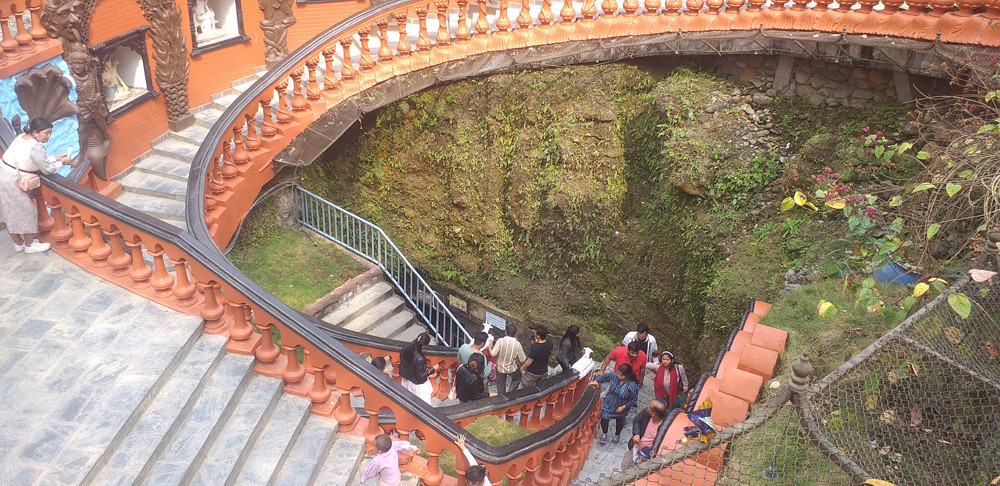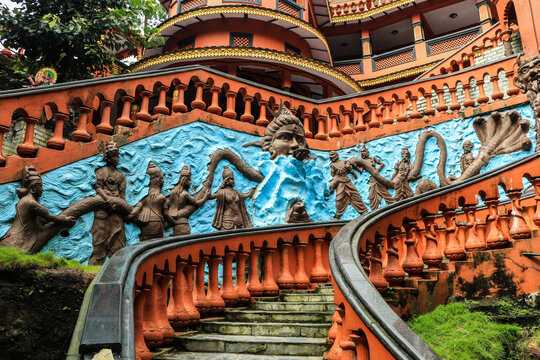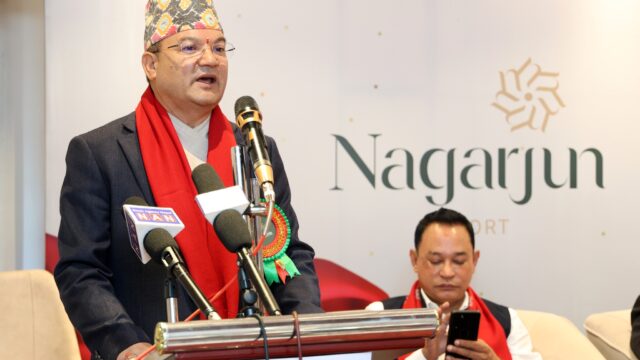The recently concluded Shatakundiya Gayatri Kotihom, a grand Vedic fire ritual organized at Siddheshwar Harihar Temple in Birauta, Pokhara-17, has made a significant impact on both domestic and international tourism in the region. The month-and-a-half-long event, which began on Baishakh 16 and concluded today, has not only attracted millions of devotees from Nepal and India but has also served as a spiritual and cultural catalyst for tourism development in Pokhara.
According to the temple management and local tourism stakeholders, visitors participating in the Kotihom also took the opportunity to explore various religious and scenic destinations in Pokhara. Among these, Gupteshwor Mahadev Cave, located nearby in Chhorepatan, has seen a noticeable rise in visitor numbers. Chairman of the Gupteshwor Cave Management Committee, Laxman Bastola, reported a nearly 10% increase in footfall compared to the same period last fiscal year.
“From Chaitra 17 to Jestha 26 of the previous fiscal year, 93,716 tourists visited the cave. During the same period this year, 101,144 visitors bought entry tickets,” Bastola stated. He further attributed the increase in tourism directly to the religious event, explaining that a large number of devotees arriving for the Kotihom also visited Mahadev’s shrine inside the cave and nearby tourist attractions such as Devi’s Fall (Patale Chhango). “Compared to previous years, this year saw 7,428 more tourists. There has also been a rise in Indian visitors during this period,” Bastola added.
The cave’s unique natural structure, located around 100 meters below ground, features holy waters trickling down limestone surfaces, forming an awe-inspiring spiritual ambiance. As visitors move deeper inside the cave, they reach a spacious chamber housing the revered Mahadev idol, believed to fulfill the wishes of devotees. The cave leads to an open section where the mesmerizing reflections of Devi’s Fall in a natural pond captivate visitors.
“The cave has naturally-formed rock images of various deities and offers stunning views of the falls and the natural bridge over Siddhartha Highway. Kotihom has played a key role in promoting these sites,” Bastola emphasized.

Discovered in 2050 B.S. (1993 A.D.), Gupteshwor Mahadev Cave has gained fame for its spiritual and geological significance. The Kotihom event has now helped reintroduce this attraction to a wider audience, further aiding tourism promotion in the Gandaki Province.
Beyond the cave and waterfalls, Kotihom pilgrims also visited other major religious and tourist spots in Pokhara, such as Tal Barahi Temple, Bindhyabasini Temple, Pumdikot Shiva Statue, Fewa Lake, Sarangkot, and the World Peace Pagoda. Tourism entrepreneurs say that such religious congregations have become instrumental in promoting the holistic tourism experience Pokhara offers, combining natural beauty with spiritual sanctity.
The Human Sewa Foundation Nepal, the organizing body behind the Kotihom, stated that the purpose of the event was to promote peace and spiritual awakening. President and Yagna Initiator Balayogeshwar Vijayashri Krishnamurti Maharaj said the Kotihom aimed to highlight the cultural and religious richness of Pokhara, positioning it as a gateway to Nepal’s sacred geography, notably Muktinath.

“This Kotihom helped elevate religious, cultural, and historical importance at national and international levels. Our vision is to revive Vedic wisdom and traditions while also addressing scientific, social, and spiritual dimensions relevant to today’s society,” said Maharaj.
The Siddheshwar Harihar Temple premises spans over 29 ropani and 12 aana of guthi (trust) land, and the Kotihom took place over nearly 80 ropani of this land. A total of 100 kunds (ritual fire pits) were constructed. Beginning on Baishakh 17, around 300 priests and spiritual practitioners conducted the homa (fire offerings), using traditional items like barley, sesame, rice, ghee, and sacred herbs.
According to Kotihom Co-Incharge Yubak Lamichhane, the event saw participation from hundreds of thousands of devotees and raised over NPR 100 million in donations and offerings. The grand event not only served as a religious awakening but also spurred economic activity in and around Pokhara through increased hotel bookings, local transport, and the sale of goods and services.

In a gesture of appreciation, the Siddheshwar Harihar Temple Management Committee honored Bhagwat Manjali Radhika Dasi, the chief reciter of religious scriptures during the Kotihom, and President Krishnamurti Maharaj, for their contribution to reviving and showcasing the temple’s historical importance. Chairman Nagendra Sharma Bhandari presented them with certificates of appreciation during a special event in the temple courtyard.
Adding to the spiritual ambiance, three learned priests performed a grand Maha Aarti (holy fire ritual) accompanied by Vedic hymns and musical instruments. The temple’s main ritual fire pit, constructed specifically for the Kotihom, witnessed continuous religious activities throughout the event. Sharma also revealed that the temple’s royal guthi deed, originally issued in 1864 B.S. during the Rana period, is still intact and preserved, lending historical weight to the temple’s legacy.
As the flames of the 100 kunds have now been extinguished, the spiritual energy continues to resonate throughout Pokhara. The successful completion of the Kotihom has set an example of how religious and cultural events can actively contribute to Nepal’s tourism economy, spiritually enriching for devotees and economically beneficial for the region. With such initiatives, Pokhara is fast emerging not only as an adventure destination but also as a thriving spiritual tourism hub, blending faith, culture, and nature in perfect harmony.






